
Le Panier: The Heartbeat of Old Marseille
Discover Le Panier in Marseille: A historical and cultural gem with vibrant street art, charming squares, and a lively Mediterranean atmosphere.
Le Panier, the oldest neighborhood in Marseille, invites you to wander through its maze of narrow streets, colorful houses, and artistic flair. This historic quarter, perched on a hill above the Old Port, is a living testament to the city's rich and diverse past. As you stroll through its winding alleys, you'll discover charming squares, ancient churches, and a vibrant street art scene that reflects the soul of the community. Le Panier is a treasure trove of history and culture, with each corner telling a story. Don't miss the Vieille Charité, a stunning 17th-century almshouse turned cultural center, where you can explore museums and exhibits. The neighborhood's Mediterranean vibe is palpable, with its pastel-colored buildings, bustling markets, and fragrant cafes offering delicious local treats like navettes and panisses. Beyond its historical landmarks, Le Panier is alive with contemporary creativity. Art galleries, artisan shops, and trendy boutiques dot the area, making it a perfect spot for finding unique souvenirs. The neighborhood's lively atmosphere is complemented by a calendar full of events, from street festivals to open-air concerts, ensuring there's always something to experience.
Local tips in Le Panier
- Wear comfortable shoes as the cobblestone streets and steep hills can be challenging.
- Visit the Vieille Charité for a mix of history, art, and culture.
- Explore the local markets early in the morning for the freshest produce and local delicacies.
- Take time to appreciate the street art scattered throughout the neighborhood.
- Enjoy a coffee or a meal at one of the many outdoor cafes for an authentic local experience.
Le Panier: The Heartbeat of Old Marseille
Le Panier, the oldest neighborhood in Marseille, invites you to wander through its maze of narrow streets, colorful houses, and artistic flair. This historic quarter, perched on a hill above the Old Port, is a living testament to the city's rich and diverse past. As you stroll through its winding alleys, you'll discover charming squares, ancient churches, and a vibrant street art scene that reflects the soul of the community. Le Panier is a treasure trove of history and culture, with each corner telling a story. Don't miss the Vieille Charité, a stunning 17th-century almshouse turned cultural center, where you can explore museums and exhibits. The neighborhood's Mediterranean vibe is palpable, with its pastel-colored buildings, bustling markets, and fragrant cafes offering delicious local treats like navettes and panisses. Beyond its historical landmarks, Le Panier is alive with contemporary creativity. Art galleries, artisan shops, and trendy boutiques dot the area, making it a perfect spot for finding unique souvenirs. The neighborhood's lively atmosphere is complemented by a calendar full of events, from street festivals to open-air concerts, ensuring there's always something to experience.
Iconic landmarks you can’t miss
Marseille Cathedral
Explore Marseille Cathedral, a stunning blend of Romanesque and Byzantine architecture, rich in history and cultural significance, overlooking the Mediterranean.

Le Panier Marseillais
Explore the artistic heart of Marseille at Le Panier Marseillais, where local culture, history, and culinary delights blend beautifully.
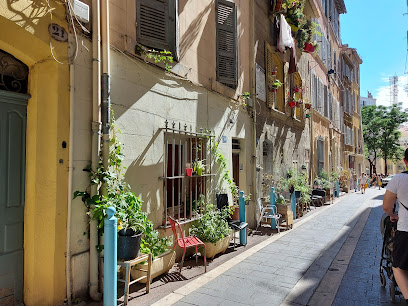
Quartier du panier
Explore the historic Quartier du Panier, a vibrant neighborhood in Marseille filled with art, culture, and culinary delights.
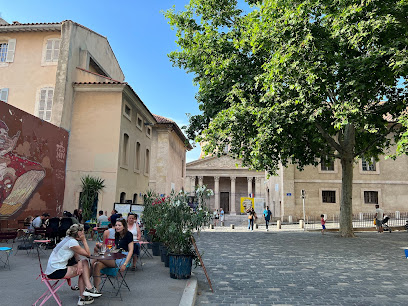
Maison Diamantée
Discover the historical elegance of Maison Diamantée, a stunning architectural gem in the heart of Marseille's cultural landscape.
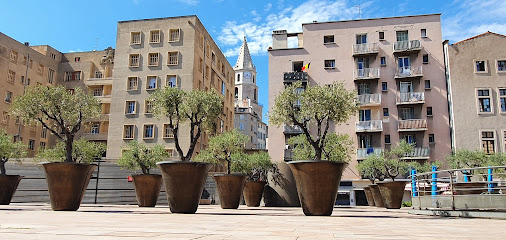
Memorial De La Deportation De L'Internement Et De La Rèsistance
Explore the powerful history at the Memorial De La Deportation De L'Internement Et De La Résistance in Marseille, a tribute to resilience and remembrance.
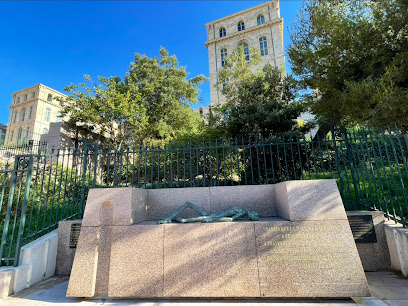
Place de Lenche
Explore the vibrant atmosphere and rich history of Place de Lenche, a must-visit square in the heart of Marseille, perfect for immersing in local culture.
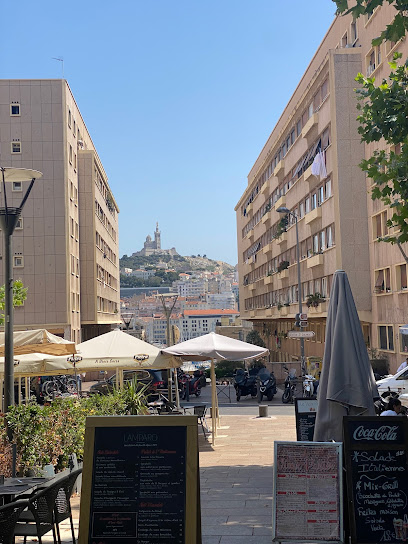
Place des moulins
Experience the enchanting Place des Moulins in Marseille, a charming square filled with history, culture, and delightful local eateries.
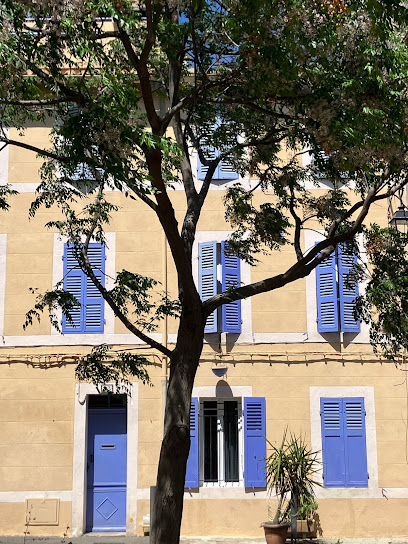
Vieille tour -Tour des Trinitaires
Explore the charming Vieille Tour - Tour des Trinitaires, a historic gem in Marseille offering a glimpse into the city's medieval past.
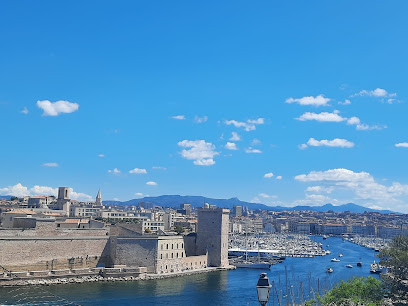
Statue de Pytheas et Euthymenes
Explore the Statue de Pytheas et Euthymenes in Marseille, a historical landmark that celebrates the city's rich maritime heritage and ancient exploration.
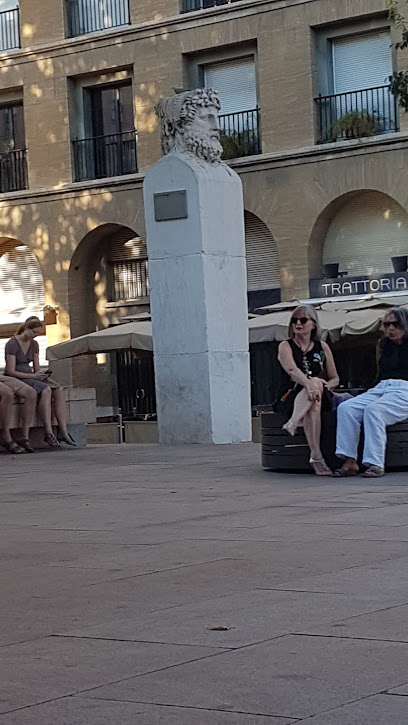
Place de la Charité
Experience tranquility at Place de la Charité, a lush park in the heart of Marseille perfect for relaxation and leisure amidst city life.
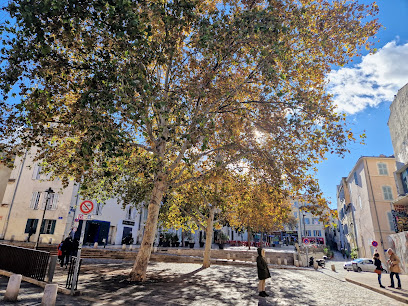
Unmissable attractions to see
Old Charity Center
Explore the Old Charity Center in Marseille, a cultural landmark showcasing art, history, and stunning architecture in the heart of the city.
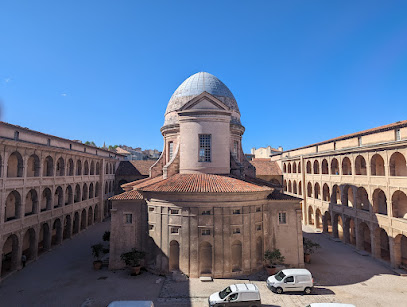
Le Panier Marseillais
Experience the vibrant charm of Le Panier Marseillais, where history meets modernity in the heart of Marseille's captivating streets.
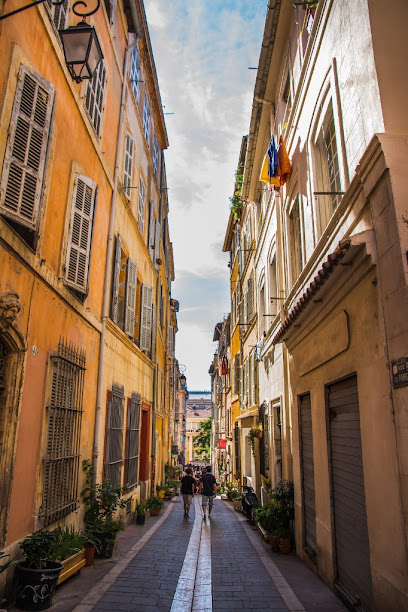
Quartier du panier
Discover the historic charm and vibrant culture of Quartier du Panier, Marseille's oldest neighborhood filled with art, cuisine, and history.

Essential places to dine
Entre Terre & Mer
Discover authentic Mediterranean cuisine at Entre Terre & Mer in Marseille, where fresh seafood meets artisanal delicacies for an unforgettable dining experience.
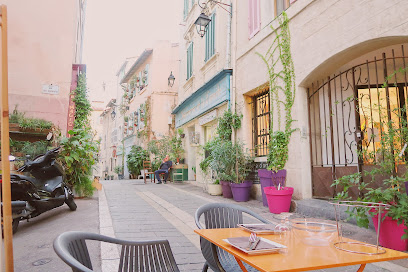
Au Coeur du Panier
Experience authentic French and Mediterranean cuisine at Au Coeur du Panier in the heart of Marseille's historic Le Panier district.
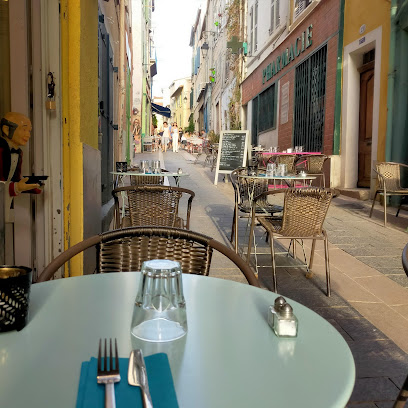
Le Caveau
Discover Le Caveau in Marseille: A family-friendly restaurant serving exquisite Mediterranean cuisine with fresh seafood delights.
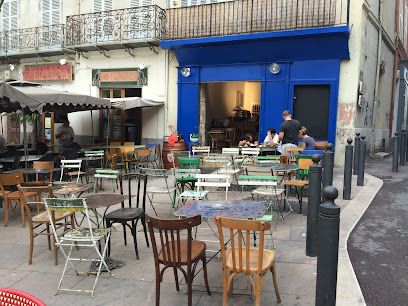
Lamparo - Restaurant Marseille
Discover Lamparo in Marseille: A delightful fusion of French and Mediterranean cuisine awaits you.
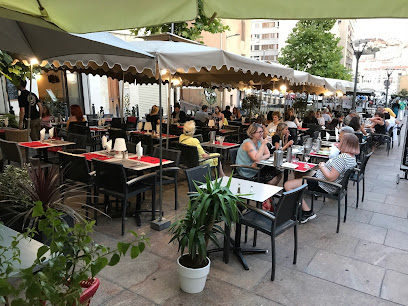
Le Refuge
Experience the best of French and Mediterranean cuisine at Le Refuge in Marseille—a culinary delight waiting to be discovered.
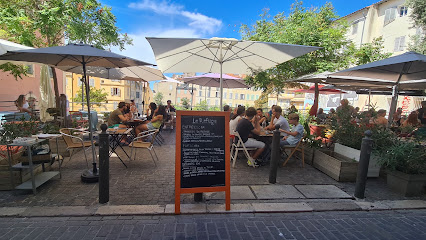
Le Clan des cigales
Experience the best of French and Mediterranean cuisine at Le Clan des Cigales – where organic meets delicious in the heart of Marseille.
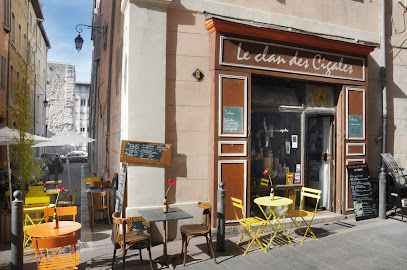
DAYO - Restaurant Panier Marseille
Experience authentic French and Mediterranean flavors at DAYO - Restaurant Panier Marseille amidst the historic charm of Le Panier.
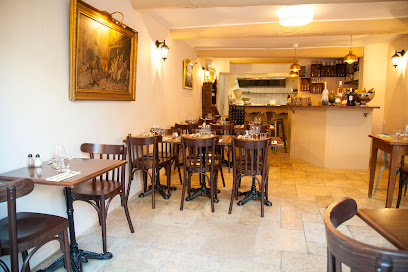
l’écailler du panier
Experience exquisite seafood at L’Écailler du Panier in Marseille - where freshness meets tradition amidst vibrant coastal charm.

Bistrot des Pistoles
Discover authentic French flavors at Bistrot des Pistoles, a charming bistro in Marseille's vibrant streets offering local cuisine with seasonal ingredients.
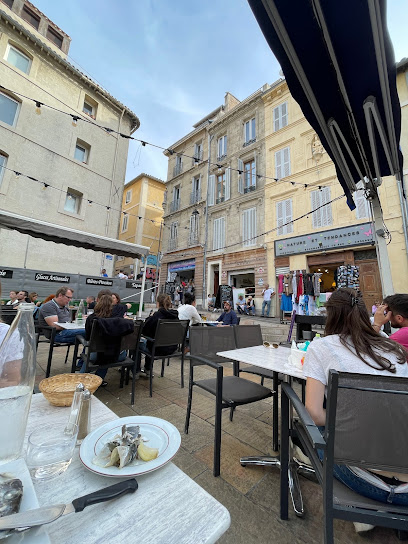
A Strega
Experience authentic Italian cuisine at A Strega in Marseille – where every dish tells a story and every meal feels like home.
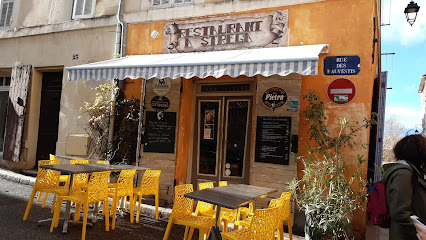
Markets, malls and hidden boutiques
Trois Fenêtres
Explore Trois Fenêtres, a charming gift shop in Marseille offering unique vintage clothing, handicrafts, and exquisite local artistry.
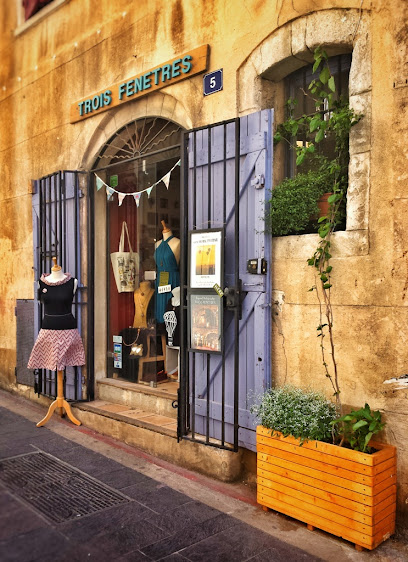
Lyly Concept Store Marseille
Explore unique gifts and stylish accessories at Lyly Concept Store, a must-visit shop in the heart of Marseille, where charm meets creativity.
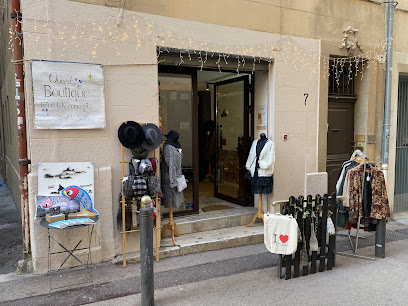
Brume d'été, le Panier Marseille. Boutique, atelier et salon de thé
Discover the charm of Brume d'été in Le Panier, Marseille's artistic haven for unique gifts and serene tea experiences.
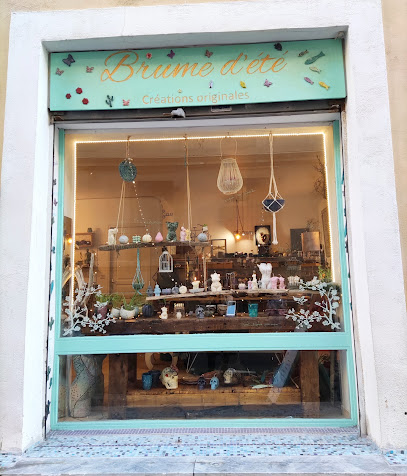
Mistral Marseille
Explore Mistral Marseille - your go-to gift shop for unique souvenirs and local crafts in the heart of Marseille.
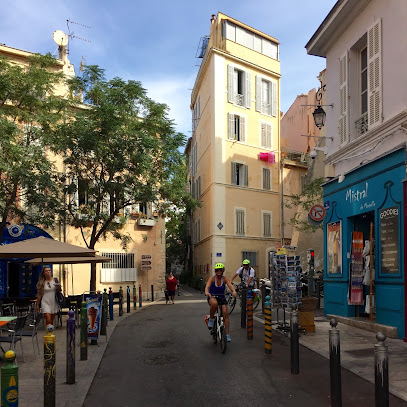
Bazar Du Panier
Explore unique women's fashion at Bazar Du Panier, a charming store in the heart of Marseille's historic district, blending local artistry with style.
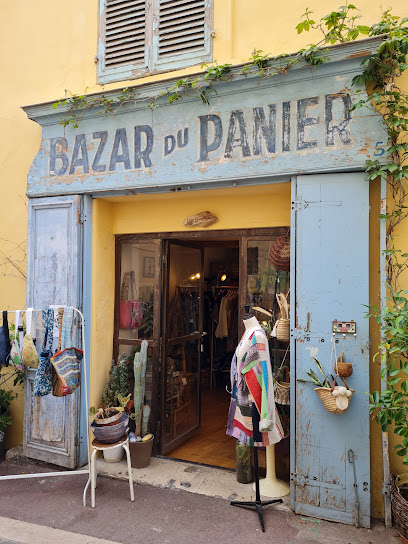
Labstyle
Explore the eclectic blend of gifts, women's fashion, and home decor at Labstyle Concept Store in the heart of Marseille, where every find tells a story.
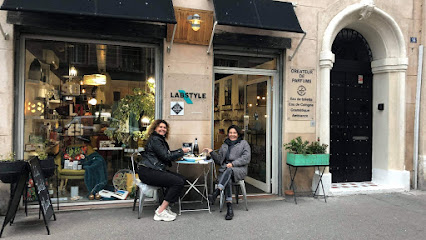
Le Panier des Createurs
Explore Le Panier des Createurs, where local artistry meets fashion in the heart of Marseille, offering unique clothing and accessories.
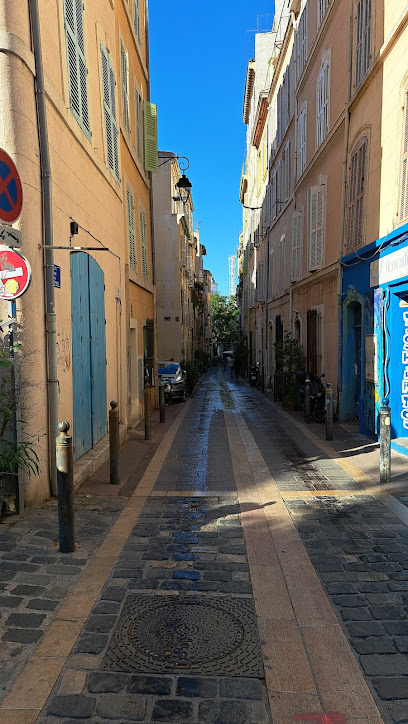
Camelia beauty
Explore Camelia Beauty in Marseille for unique handcrafted gifts and authentic local treasures that capture the city's vibrant spirit.

La tuilerie
Discover unique fashion and accessories at La Tuilerie, a charming boutique in Marseille's historic Panier district, reflecting local artistry and style.
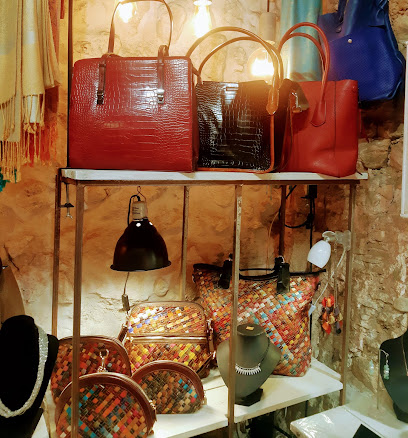
Shop Ephemeral
Experience the unique charm of Marseille at Shop Ephemeral - a boutique full of local artistry and vibrant culture.
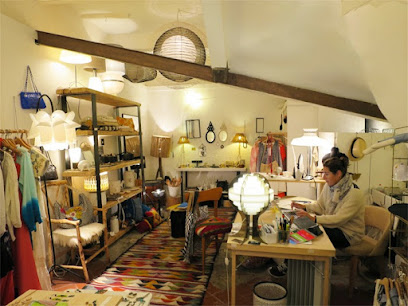
Essential bars & hidden hideouts
La Caravelle
Discover the lively essence of Marseille at La Caravelle, where delicious French cuisine meets local brews in a vibrant atmosphere.
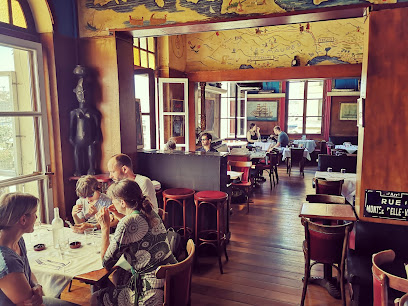
Bar des 13 Coins
Discover the lively Bar des 13 Coins in Marseille, where local beers meet delicious cuisine in a vibrant atmosphere perfect for tourists.

White Rabbit
Discover the lively atmosphere at White Rabbit, a charming bar and Irish pub in Marseille, offering craft drinks and delicious cuisine by the waterfront.

Droit Au Fut
Experience the vibrant nightlife of Marseille at Droit Au Fut, where craft beers and cocktails meet a lively atmosphere.
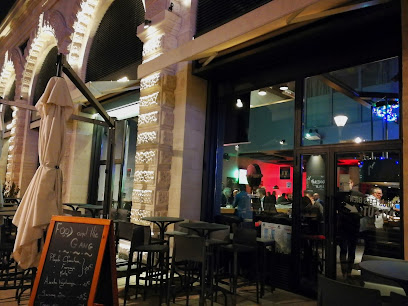
Barjac
Experience the lively charm of Barjac in Marseille, where great drinks and a vibrant atmosphere come together for an unforgettable night out.
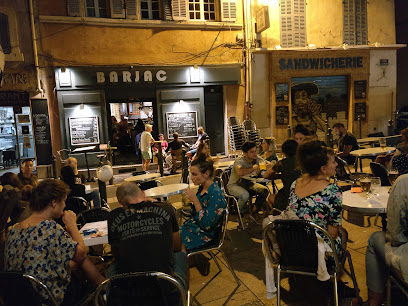
Bar the Capian
Discover the tranquil ambiance and stunning views at Bar the Capian, a must-visit destination in the heart of Marseille.
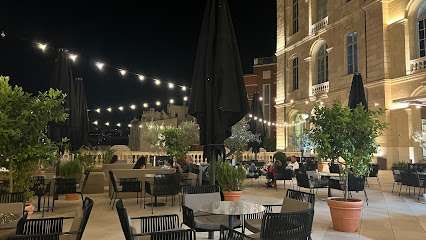
Tout vin à point
Experience the best of Marseille's wine culture at Tout vin à point, a cozy wine bar offering a curated selection and delicious bites.
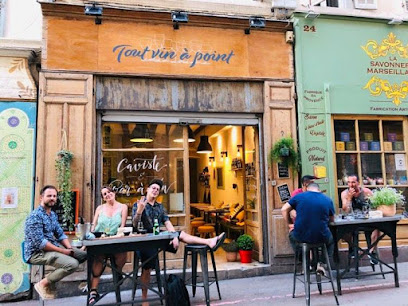
La Boule du Panier
Experience the charm of Marseille at La Boule du Panier, a cozy bar offering local drinks and vibrant atmosphere in the heart of the city.
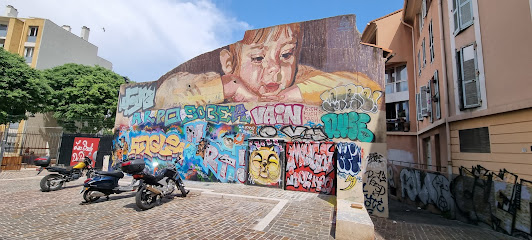
Le Comptoir d’Augustine
Discover the exquisite wine experience at Le Comptoir d’Augustine, a charming wine bar in the heart of Marseille, perfect for relaxation and local flavors.
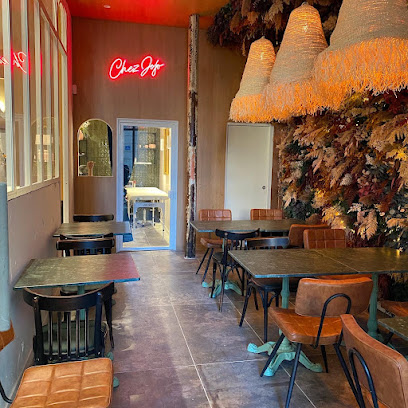
Bar du Panier
Experience the vibrant flavors of Marseille at Bar du Panier, a beloved brasserie offering authentic local cuisine in a welcoming atmosphere.
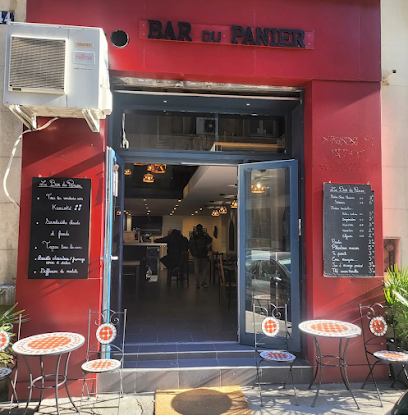
Local Phrases
-
- HelloBonjour
[bohn-zhoor] - GoodbyeAu revoir
[oh rev-wahr] - YesOui
[wee] - NoNon
[nohn] - Please/You're welcomeS'il vous plaît / De rien
[seel voo pleh / deh ree-ehn] - Thank youMerci
[mehr-see] - Excuse me/SorryExcusez-moi / Désolé
[eks-kew-zay mwah / deh-soh-lay] - How are you?Comment ça va?
[koh-mohn sah vah] - Fine. And you?Bien. Et toi?
[byen. ay twah] - Do you speak English?Parlez-vous anglais?
[par-lay voo ahn-glay] - I don't understandJe ne comprends pas
[zhuh nuh kohm-prahn pah]
- HelloBonjour
-
- I'd like to see the menu, pleaseJe voudrais voir la carte, s'il vous plaît
[zhuh voo-dray vwahr lah kart, seel voo pleh] - I don't eat meatJe ne mange pas de viande
[zhuh nuh mahnj pah duh vee-yahnd] - Cheers!Santé!
[sahn-tay] - I would like to pay, pleaseJe voudrais payer, s'il vous plaît
[zhuh voo-dray peh-yay, seel voo pleh]
- I'd like to see the menu, pleaseJe voudrais voir la carte, s'il vous plaît
-
- Help!Au secours!
[oh suh-koor] - Go away!Allez-vous en!
[ah-lay voo zahn] - Call the Police!Appelez la police!
[ah-play lah poh-lees] - Call a doctor!Appelez un médecin!
[ah-play uh meh-deh-sahn] - I'm lostJe suis perdu
[zhuh swee pair-doo] - I'm illJe suis malade
[zhuh swee mah-lahd]
- Help!Au secours!
-
- I'd like to buy...Je voudrais acheter...
[zhuh voo-dray ash-tay...] - I'm just lookingJe regarde juste
[zhuh ruh-gard zhuhst] - How much is it?Combien ça coûte?
[kohm-byen sah koot] - That's too expensiveC'est trop cher
[say troh shair] - Can you lower the price?Pouvez-vous baisser le prix?
[poo-vay voo beh-say luh pree]
- I'd like to buy...Je voudrais acheter...
-
- What time is it?Quelle heure est-il?
[kel uhr ay-teel] - It's one o'clockIl est une heure
[eel ay un uhr] - Half past (10)Dix et demi
[dees ay duh-mee] - MorningMatin
[mah-tan] - AfternoonAprès-midi
[ah-pray mee-dee] - EveningSoir
[swahr] - YesterdayHier
[yehr] - TodayAujourd'hui
[oh-zhoor-dwee] - TomorrowDemain
[duh-mahn] - 1Un
[uhn] - 2Deux
[duh] - 3Trois
[twah] - 4Quatre
[kat] - 5Cinq
[sank] - 6Six
[sees] - 7Sept
[sept] - 8Huit
[weet] - 9Neuf
[nuf] - 10Dix
[dees]
- What time is it?Quelle heure est-il?
-
- Where's a/the...?Où est le/la...?
[oo ay luh/lah] - What's the address?Quelle est l'adresse?
[kel ay la-dress] - Can you show me (on the map)?Pouvez-vous me montrer (sur la carte)?
[poo-vay voo muh mohn-tray (soor lah kart)] - When's the next (bus)?Quand est le prochain (bus)?
[kahnd ay luh proh-shahn (bus)] - A ticket (to ....)Un billet (pour ....)
[uhn bee-yay (poor)]
- Where's a/the...?Où est le/la...?
History of Le Panier
-
Le Panier, Marseille's oldest district, traces its roots back to around 600 BC when the Greeks established a trading post in the area, known as Massalia. The strategic location near the Old Port allowed it to flourish as a center of commerce and cultural exchange, laying the foundation for the vibrant city of Marseille.
-
During the Roman period, Le Panier became integral to Marseille's development. As the city grew, the neighborhood evolved into a bustling hub characterized by narrow streets, lively markets, and numerous workshops. The remains of Roman structures, such as the ancient port and the aqueduct, can still be seen, echoing the area's rich history.
-
In the 17th and 18th centuries, Le Panier witnessed the rise of the bourgeoisie, who constructed grand mansions that still define the architectural landscape of the area. This period marked an increase in cultural activities, with art and music flourishing in the neighborhood, influenced by the broader Baroque movements of the time.
-
During World War II, Le Panier suffered considerable damage from bombings, leading to a significant decline in its population and economic activity. Post-war reconstruction efforts were initially slow, resulting in many historic buildings falling into disrepair, though the area retained its unique identity amidst the challenges.
-
In recent decades, Le Panier has undergone a remarkable transformation. Artists and creative industries have flocked to the neighborhood, drawn by its historic charm and vibrant community spirit. The area is now known for its colorful street art, artisan shops, and cultural festivals, celebrating Marseille's diverse heritage and revitalizing its historical significance.
Le Panier Essentials
-
Le Panier is easily accessible from various neighborhoods in Marseille. From the Marseille Saint-Charles train station, you can take the metro Line 1 towards La Rose and transfer at Vieux Port to take Line 2 towards Bougainville. Alternatively, walk from Vieux Port for about 15 minutes, enjoying the scenic views along the waterfront. Buses 49 and 55 also serve the area, making stops near Le Panier.
-
Le Panier is a pedestrian-friendly neighborhood, making it easy to explore on foot. However, if you prefer cycling, there are bike-sharing options available throughout Marseille. Buses operate within the area as well, providing transport to nearby neighborhoods. For longer excursions, consider using the metro or tram services from Vieux Port.
-
Le Panier is generally safe for tourists, but it is wise to remain cautious, especially after dark. Areas around the Old Port can attract petty crime, such as pickpocketing. Avoid poorly lit streets and stay vigilant in crowded areas. While violent crime is rare, it is advisable to keep valuables secure and be aware of your surroundings.
-
In case of an emergency, dial 112 for police, medical, or fire assistance in France. The nearest hospital is Hôpital de la Timone, and local pharmacies can be found throughout Le Panier for minor health issues. It is advisable to have travel insurance that covers emergencies.
-
Fashion: Do wear comfortable shoes suitable for walking on cobblestone streets, and dress modestly when visiting religious sites. Don't wear overly flashy jewelry to avoid drawing attention. Religion: Do respect local customs and traditions, particularly in churches. Don't engage in loud conversations in places of worship. Public Transport: Do give up your seat for elderly passengers. Don't eat or drink on public transport. Greetings: Do greet locals with a friendly 'Bonjour'. Don't initiate a conversation without first greeting. Eating & Drinking: Do try local specialties like bouillabaisse and pastis. Don't eat while walking, as it's considered impolite.
-
To experience Le Panier like a local, visit the small artisan shops and galleries that dot the neighborhood. Engage with local artists and shopkeepers, who are often eager to share their stories. Don’t miss the vibrant street art that adorns many walls, and be sure to explore the hidden courtyards and staircases that lead to stunning views of the city. Enjoy a coffee at a local café and take time to people-watch, immersing yourself in the neighborhood's lively atmosphere.
Nearby Cities to Le Panier
-
Things To Do in Aix-en-Provence
-
Things To Do in Avignon
-
Things To Do in Nîmes
-
Things To Do in Saint-Tropez
-
Things To Do in Montpellier
-
Things To Do in Cannes
-
Things To Do in Nice
-
Things To Do in Fontvieille
-
Things To Do in Les Moneghetti
-
Things To Do in Moneghetti
-
Things To Do in La Condamine
-
Things To Do in Monaco-Ville
-
Things To Do in Monte Carlo
-
Things To Do in Larvotto
-
Things To Do in Saint Roman













